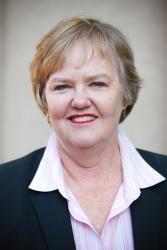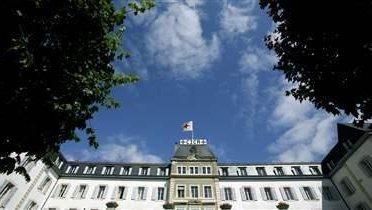Traveling to Geneva isn’t as adventurous as going to Haiti, Uganda, Fiji, Japan or Australia (some of my other trips this past year). But as the humanitarian capital of the world, Geneva offers opportunities to engage with practitioners working with the United Nations, Red Cross/Crescent movement and NGOs and to hear about burning issues where our research can help improve humanitarian response. Unlike most other programs at Brookings, the main target audience for the work of the IDP Project is the international humanitarian community, and there’s no better place to engage those humanitarian actors on policy issues than in Geneva.
I participated in a number of formal and informal meetings over several days in Geneva and was struck by several themes that emerged in those discussions. One issue that came up repeatedly was the question of durable solutions for internally displaced persons. What’s the relationship between solutions for IDPs and efforts to end international refugee crises? What are the characteristics of truly durable solutions? When can you say that displacement has ended? We spent a few years working on the latter issue, eventually coming up with the Framework for Durable Solutions – a framework that was endorsed by the highest humanitarian coordinating body, the Inter-Agency Standing Committee. But it’s one thing to come up with a standard and another to apply it in concrete situations. It isn’t enough for IDPs simply to return to their communities for the conclusion to be drawn that displacement has ended. The Framework states that displacement can be said to have ended if people no longer face discrimination as a result of their displacement. But determining whether or not this has been achieved is tricky. And there are durable solutions other than return – IDPs may decide to settle where they are or to move elsewhere in the country to begin new lives. Finding durable solutions is important to governments who are often anxious to say that the post-conflict situation has returned to normal. It’s important to humanitarian agencies who can phase out their assistance to IDPs once displacement has ended. And, most of all, of course, it’s important to IDPs to be able to get on with their lives. But the fact that the humanitarian actors in Geneva are still raising questions about how to support durable solutions makes me think that we need to beef up our research work on durable solutions so that the Framework’s recommendations can be translated into concrete and effective efforts in the field.
Another hot issue is how to respond to “non-camp” IDPs who make up some two-thirds of the world’s displaced. Displaced people living in camps are more visible than those who live dispersed in communities – for example, living with host families or living on the margins of urban areas. Sometimes these non-camp IDPs, as they are called, don’t want to be identified as displaced, making it difficult for humanitarian actors to assist them. And sometimes it could put them at risk if humanitarian actors singled them out from their neighbors for assistance. We’ve just finished up some research on host communities – in Colombia and Azerbaijan – and it felt good to be able to contribute some concrete evidence to the discussions. But there’s still a lot to be done. In particular, these discussions highlighted the need for further work on the urban nature of displacement, particularly on an issue that no one is looking at but which is bound to become more important in the future: the role of municipal governments.
The meetings in Geneva weren’t all informal, of course. We launched our new 350-page report, From Responsibility to Response: Assessing National Approaches to Internal Displacement, at the Swiss mission in Geneva, which reviews 15 governments’ actions toward people displaced within their territories. While the report was well-received in Washington, the questions from participants in Geneva were much more action-oriented. “What’s the most important initial step for governments to take?” one participant asked. A UN participant asked, “How can we support governments to adopt good policies toward IDPs?” A representative of a donor government asked: ‘What examples did you find of donor governments working together to support good policies toward IDPs?’ It was wonderful to think that this multi-year research project was providing some concrete advice to those in a position to influence policies potentially affecting millions of people.
When we arrived in Geneva with hundreds of pounds of our publications – not only shipping them in advance but carrying as many heavy bags of documents as we dared – we wondered what in the world we would do with any that were left over. We needn’t have worried. All of our publications were grabbed up by Geneva-based staff eager to have them and to share them with colleagues. Next time we’ll bring more copies. The research we do is needed in the world’s humanitarian capital.


